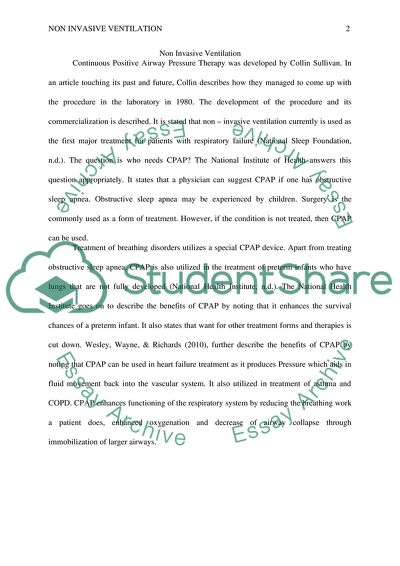NON INVASIVE VENTILATION Essay Example | Topics and Well Written Essays - 500 words. https://studentshare.org/medical-science/1830993-non-invasive-ventilation
NON INVASIVE VENTILATION Essay Example | Topics and Well Written Essays - 500 Words. https://studentshare.org/medical-science/1830993-non-invasive-ventilation.


